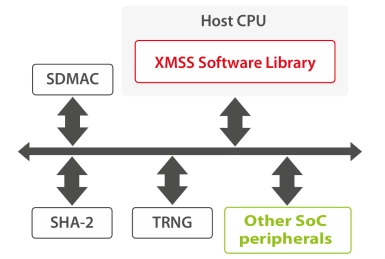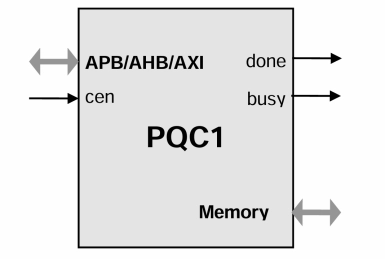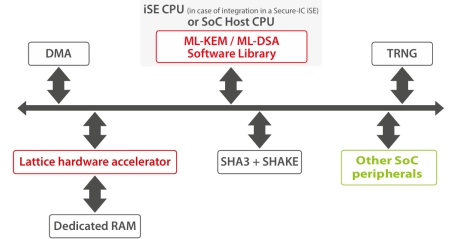Cryptography IP
Filter
Compare
132
IP
from
28
vendors
(1
-
10)
-
Public-Key Cryptography PKCS IP Core
- Comprehensive implementation in accordance with RSA Laboratories' Public-Key Cryptography Standards (PKCS) series, PKCS #5 v2.0
- Support for SHA256 algorithm
- Technology-independent HDL model
- Simple external interface for easy adaptation
-
High-Performance Hybrid Classical and Post-Quantum Cryptography
- The High-Performance Hybrid Cryptography IP core delivers accelerated support for both classical (RSA, ECC) and post-quantum (ML-KEM, ML-DSA) algorithms in a unified architecture optimized for maximum throughput.
-
Hybrid Classical and Post-Quantum Cryptography
- The Hybrid Cryptography IP core combines traditional asymmetric algorithms—such as RSA and ECC—with post-quantum standards including ML-KEM (Kyber) and ML-DSA (Dilithium)—in a single, efficient hardware module.
-
XMSS Post-Quantum Cryptography IP
- XMSS is a Post-Quantum Cryptographic (PQC) algorithm, meaning it is mathematically designed to be robust against a cryptanalytic attack using a quantum computer.
- XMSS is a stateful Hash-Based Signature Scheme that has been recommended by NIST in 2020.

-
APB Post-Quantum Cryptography Accelerator IP Core
- Implements ML-KEM and ML-DSA post-quantum cryptography digital signature standards. The system interface is an microprocessor slave bus (APB, AHB, AXI options are available).
- The design is fully synchronous and requires only minimal CPU intervention due to internal microprogramming sequencer.

-
Cryptography Software Library
- Symmetric Ciphers
- Hashes
- RSA®
- ECC Prime Curves
- ECC Binary Curves
- Certificates (X.509 v3)
-
Elliptic Curve Cryptography IP
- Supported algorithms:
- Point multiplication
- ECDSA signature generation
- ECDSA signature verification
-
high-performance solution for elliptic curve cryptography
- Supported algorithms:
- Supported Elliptic Curves
- Optional Side Channel Attacks countermeasures
- Input/Output EC point verification
-
ML-KEM / ML-DSA Post-Quantum Cryptography IP
- ML-KEM (Crystals-Kyber) and ML-DSA (Crystals-Dilithium) are Post-Quantum Cryptographic (PQC) algorithms, meaning they are mathematically designed to be robust against a cryptanalytic attack using a quantum computer.
- Both have been standardized by the NIST in it post-quantum cryptography project.

-
RSA public key cryptography with APB interface
- For a typical 1024-bit keysize the modular exponentiation can be performed 25 times faster than a pure software implementation. A 1024-bit message can be encrypted (public key of 65537) in 50,000 clock cycles and decrypted in 3,600,000 clock cycles. The peripheral can also be used with software support for CRT based decryption and for generating keys. Using CRT can reduce the cycle count by 1/4.
- The core is very small; when targeting TSMC90LP at 200MHz it comprises only 17k gates for the logic and an equivalent 32k gates including all memories.